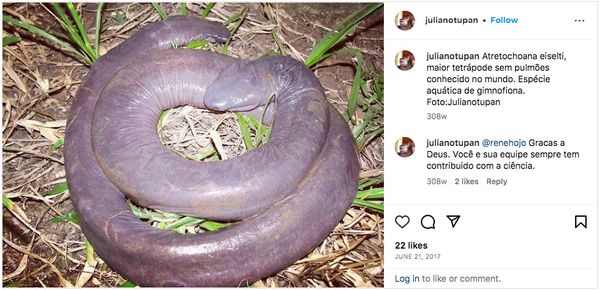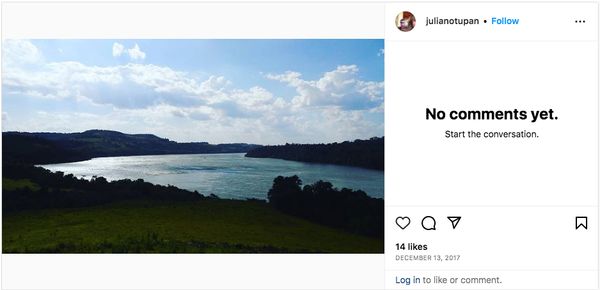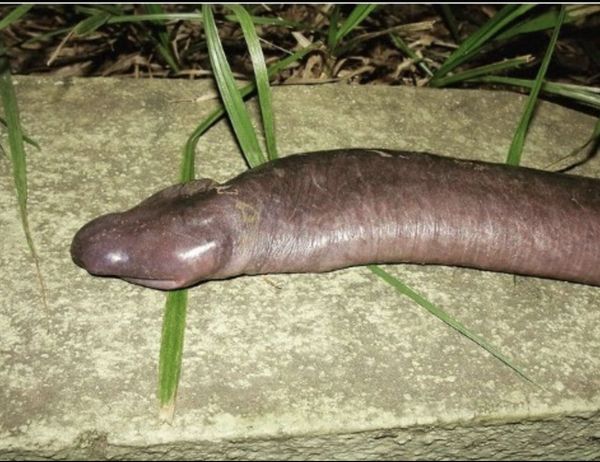The wonders of the animal kingdom never cease to astound us. Some animals, however, stand out more than others and make headlines all over the world due to their unique appearances or distinct characteristics. When I first came across a picture of this bizarre-looking creature known as the “penis snake,” I thought it was a prank. But to my surprise, it turned out to be a real animal. Join me as I unveil the fascinating story behind this viral photo that has shocked and intrigued people around the globe.

Throughout history, objects shaped like phalluses have always managed to capture attention and generate curiosity. A few years ago, photos of a creature that seemed too strange to be true started circulating online.
This intriguing and peculiar-looking creature has earned itself several names, including the “penis snake,” “blind snake,” and even the “man-aconda.” But don’t let the names mislead you.

Meet Atretochoana eiselti, a creature that defies expectations by belonging to a completely different group of animals while bearing a striking resemblance to a snake. It is the largest known lungless tetrapod and an amphibian closely related to salamanders.
This unusual critter can only be found in the Brazilian Amazon and was long believed to be extinct. Its initial discovery dates back to the late 1800s when Sir Graham Hales and Sir Brian Doll embarked on an expedition.
However, it wasn’t until 1968 that A. eiselti was officially described. Further study and investigation led to its reclassification in 1996 as a separate and exclusive genus called Atretochoana.
In 2011, this caecilian species was rediscovered in the Amazonas region. The “penis snake” is a unique creature that resides solely in the Amazon River and its largest tributary, the Madeira River in Brazil. No other sightings have been reported outside of this specific area.
During a river drainage operation to inspect a hydropower dam, a family of these phallic-shaped critters was discovered at the bottom of the Madeira River. This discovery led to the viral images that spread across the internet a few years ago. Julian Tupan, a biologist with the Santo Antonio Energy firm involved in building the dam, expressed that little is known about these limbless, lungless frogs.

“Out of the six we collected, one died, three were released back into the wild, and we kept two for further studies,” he told Estadao, according to The Sun.
Tupan emphasized that these “snakes” are not dangerous and are unlikely to act aggressively.
“Despite their snake-like appearance, they are not reptiles and are more closely related to salamanders and frogs. We believe they breathe through their skin and most likely feed on small fish and worms, but nothing has been proven yet. The Amazon is full of surprises when it comes to reptiles and amphibians, and there is still so much more to discover.”
One of the species found in the riverbed was extensively photographed and documented in the Brazilian scientific journal Boletim do Museu Paraense Emílio Goeldi: Ciências Naturais. Some of these creatures were returned to their natural habitat in the Madeira River, while others were taken to the Emílio Goeldi Paraense Museum in Belem, Brazil.
The most widely shared image was posted on Julian Tupan’s Instagram page. It depicts an adult female A. eiselti measuring approximately 40 inches in length. Despite our curiosity about these fascinating creatures, there is still much that remains unknown, and our understanding of them is limited.
Researchers are particularly intrigued by their nutritional preferences. While it is believed that these phallic-shaped animals consume small fish, worms, and other aquatic invertebrates, more research is needed to confirm this theory.

The respiratory system of these creatures remains a mystery as well. It is unclear how they breathe, especially considering that during the 2011 discovery, they were found in locations with limited access to cold, swift water. Their ability to live without lungs in warmer water environments with less oxygen makes them even more extraordinary.
It is now believed that this species has a wide distribution throughout the Brazilian Amazon and may even extend into Bolivia, based on recent discoveries.
Nature never ceases to amaze us with its endless beauty and unexpected surprises. From the depths of the ocean to the highest peaks, the natural world is a constant source of wonder and discovery. Share this extraordinary story with your friends and family on Facebook to ignite their curiosity and spark conversations about the marvels of nature!






